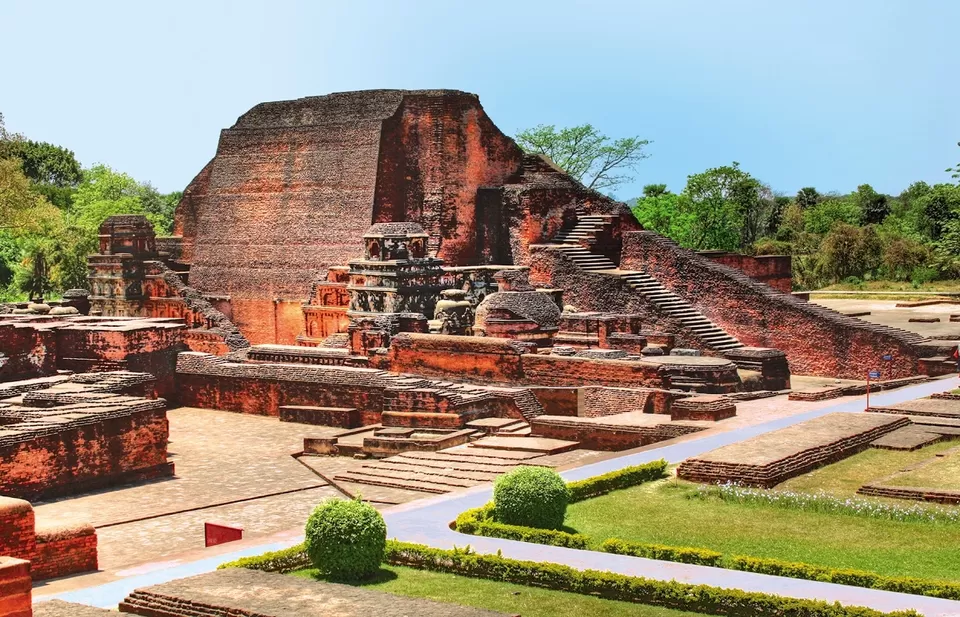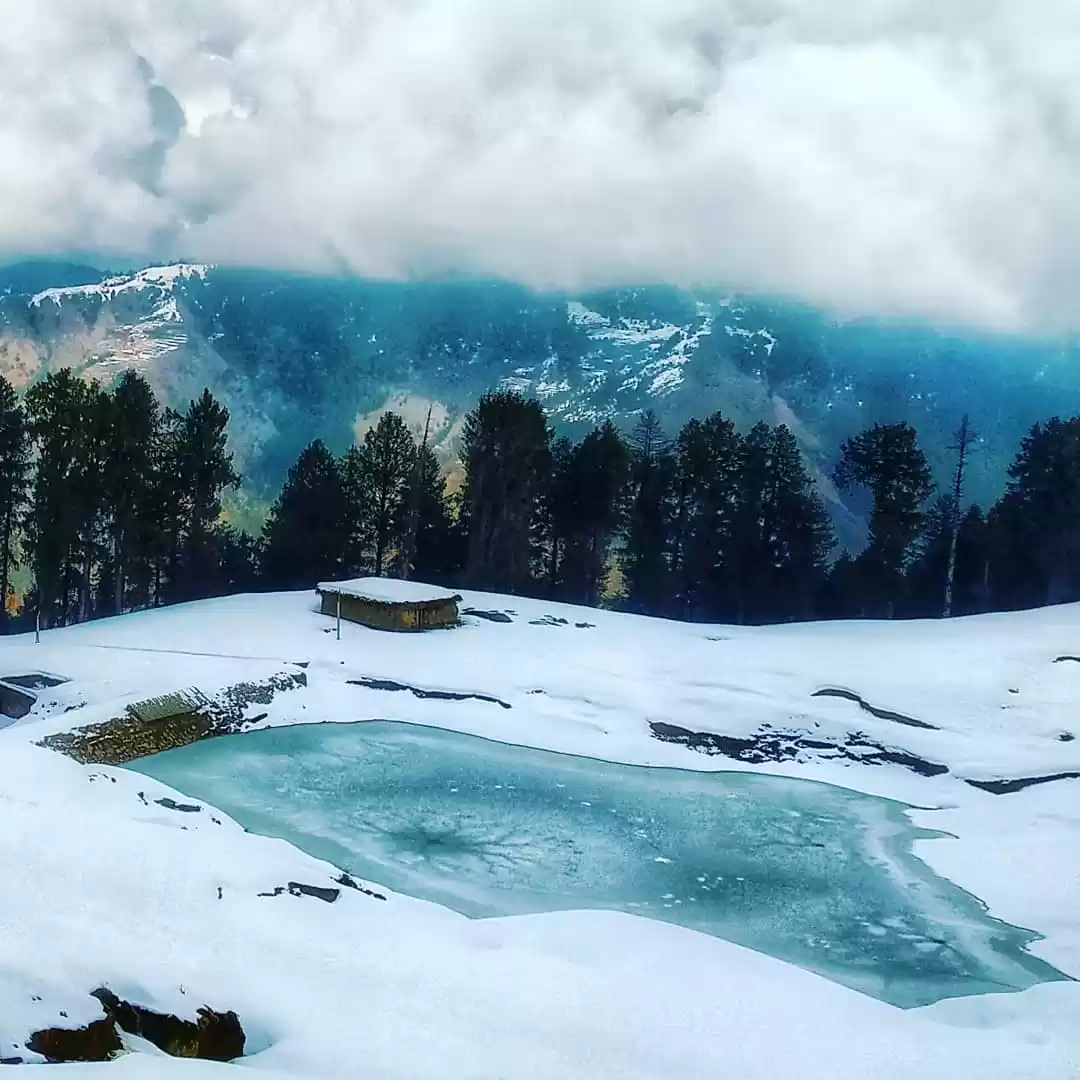Nalanda Ruins, nestled in the heart of Bihar, India, beckon travelers on a journey through time. Imagine walking amidst the remnants of an ancient university that once thrived as a beacon of knowledge, attracting scholars from across Asia. Let’s explore this historical gem and discover why Nalanda deserves a prominent spot on your travel bucket list.
The Glorious Past of Nalanda University
A Center of Learning
Founded in the 5th century CE, Nalanda University stood as a testament to India’s intellectual prowess.
Its sprawling campus covered approximately 30 acres, housing viharas (residential cells), stupas, and shrines.
Nalanda wasn’t merely an educational institution; it was a vibrant hub where ideas converged, debates flourished, and wisdom blossomed.
Subjects Taught
Imagine scholars immersed in discussions on Buddhist scriptures, philosophy, metaphysics, logic, grammar, astronomy, and medicine.
Nalanda’s curriculum transcended boundaries, drawing students from distant lands like China, Tibet, and beyond.

Architectural Marvels: Stupas and Viharas
The Sariputta Stupa
Picture a majestic stupa rising against the horizon—a tribute to the revered disciple of Buddha, Sariputta.
The Sariputta Stupa stands as an architectural marvel within Nalanda’s ruins.
Its intricate carvings tell stories of devotion, enlightenment, and the pursuit of truth.
Viharas: Where Scholars Resided
Explore the viharas—simple yet profound structures where scholars lived and studied.
These cells witnessed intense debates, silent contemplation, and the forging of lifelong friendships.
Imagine monks poring over ancient manuscripts by candlelight—their minds ablaze with curiosity.
Hiuen-Tsang’s Chronicles: A Glimpse into Nalanda
The Chinese Traveler’s Journey
Hiuen-Tsang (Xuanzang), the intrepid Chinese traveler, arrived at Nalanda in the 7th century.
His vivid accounts describe bustling courtyards, bustling classrooms, and revered teachers imparting wisdom.
Hiuen-Tsang’s writings immortalized Nalanda for posterity.
Decline and Destruction: The End of an Era
The Pala Period and Beyond
Despite flourishing for centuries under Gupta and Pala patronage, Nalanda faced gradual decline.
Other Buddhist centers emerged nearby, diverting attention away from this venerable institution.
Then came the fateful invasion by Bakhtiyar Khilji in the 12th century—a cataclysmic event that shattered Nalanda’s legacy.
UNESCO World Heritage Site: A Living Legacy
Preserving History
In 2016, UNESCO bestowed World Heritage status upon Nalanda Mahavihara.
Today, its ruins stand as silent witnesses to a bygone era—an ode to human curiosity and resilience.
Visiting Nalanda Today: A Pilgrimage for Seekers
Practical Information
- Plan your visit between sunrise and sunset—the golden hours when history whispers its secrets.
- Entry fees are nominal—₹20 for Indian nationals and ₹250 for foreigners.
- Capture memories through your lens; photography is allowed without additional charges.
How To Reach Nalanda from Patna
Certainly! To reach Nalanda from Patna, you have a few options:
By Train and Taxi:
Take a train from Patna Junction (Patna Jn) to Bakhtiyarpur Junction (Bakhtiyarpur Jn). From Bakhtiyarpur Jn, hire a taxi to reach Nalanda.
The total travel time is approximately 1 hour and 11 minutes. This option provides a convenient and efficient way to reach Nalanda.
By Taxi:
You can directly take a taxi from Patna to Nalanda. The taxi ride takes approximately 1 hour and 13 minutes. This option offers flexibility and privacy.
By Car:
If you prefer driving, you can take your own vehicle. The distance between Patna and Nalanda is approximately 72 kilometers, and the drive takes around 1 hour and 15 minutes. Ensure that you follow the route via Sh78 and NH431 for the quickest journey.
Remember that Nalanda is a treasure trove of history, and as you explore its ruins, you’ll step back in time to an era of wisdom and enlightenment. Enjoy your journey!

Best Time To Visit Nalanda Ruins
The best time to visit Nalanda Ruins is between October and March. During this period, the weather is pleasant, and you can explore the historical site comfortably. The mornings are particularly amazing for visiting the ruins. If you plan to visit during the summer season, it’s advisable to go in the morning to avoid the extreme heat of the Indian summer.
Other Places To Visit Nearby
Certainly! Besides the Nalanda University Ruins, there are several other fascinating attractions to explore near Nalanda. Let’s dive into some of them:

Sariputra Stupa / Great Stupa:
Located within the Nalanda ruins, this stupa was built in the 3rd century by Ashoka in honor of Sariputra, one of Buddha’s chief disciples.
The stupa has undergone several accretions over time, resulting in its current pyramid-like shape.
Admire the intricate carvings and imagine the pilgrims who once circled it in reverence.

Hiuen Tsang Memorial Hall:
Dedicated to the Chinese scholar and traveler Hiuen Tsang (Xuanzang), this memorial hall showcases his writings and contributions.
Hiuen Tsang visited Nalanda in the 7th century and chronicled detailed accounts of the university.
Explore this architectural gem that reflects the historical ties between India and China.

Nalanda Archaeological Museum:
The museum houses antiquities found not only at Nalanda but also at nearby Rajgir.
Discover Buddhist and Hindu bronzes, undamaged statues of Buddha, and other artifacts.
Immerse yourself in the rich cultural heritage preserved within its walls.

Kundalpur:
Located just outside Nalanda, Kundalpur is believed to be the birthplace of Lord Mahavira, the 24th Tirthankara of Jainism.
Explore Jain temples and soak in the spiritual ambiance of this sacred pilgrimage site.
Kundalpur holds immense significance for Jain devotees.

Pawapuri:
Situated about 11 km from Nalanda, Pawapuri is another important Jain pilgrimage destination.
It is believed to be the burial site of Lord Mahavira.
Visit the Jal Mandir (Temple) in Pawapuri, which stands amidst a serene pond and offers a tranquil setting for reflection.
These attractions provide a deeper understanding of Nalanda’s historical and spiritual legacy. Whether you’re interested in ancient architecture, religious sites, or cultural artifacts, Nalanda has something to captivate every traveler!
Also read: Reliving the Chapters of History in the Ruins of Nalanda
Places To Eat Near Nalanda Ruins
Here are some restaurants near Nalanda Ruins where you can enjoy a meal after exploring the historical site:

Hotel Nalanda Residency & Subham Cafeteria
Located just 3.3 km from Nalanda University Ruins. Offers good food and a well-maintained ambiance.
Address: Nalanda-Rajgir Main Road, Opposite Main Entrance of Nalanda Ruins, Fathehpur Chowk, NH-82.
Sultan’s Cuisine
Situated in Patna (approximately 11 km from Nalanda University Ruins).
Offers Indian and Turkish cuisine on the 4th floor of Patna One Mall.
Address: Fraser Road, Patna-1.
The Raj Rasoi Restaurant
Located near Nageshwar Mall in Bihar Sharif (approximately 9.4 km from Nalanda University Ruins).
Known for its nice atmosphere and delicious food.
Address: NH33.
Boon Lite Cafe
Found in Rajgir (approximately 11.1 km from Nalanda University Ruins).
Offers great food at reasonable prices.
Address: Pawapuri Jal Mandir Road, opposite DADAWADI AT PAWAPURI1.
Rox Bihar Cafe
Situated in Bihar Sharif (approximately 10.8 km from Nalanda University Ruins).
Known for its Chinese, Indian, pizza, barbecue, and soup options.
Address: Gangotri Complex, Garhpar, Opposite Allahabad Bank, Bihar Sharif.
Green Hotel
Located near Rajgir Kund (approximately 13.7 km from Nalanda University Ruins).
Offers Indian and Asian cuisine.
Address: NH120.
These restaurants provide a variety of dining options to suit different tastes. Whether you’re craving local flavors or international dishes, you’ll find something delightful near Nalanda!
You may also like to check out: Trip to Rajgir-Nalanda-Pawapuri-Bodhgaya: Walking down the alleys of history
Nalanda Ruins invite you to step into a world where scholars pondered existence under ancient banyan trees. As you walk these hallowed grounds, listen closely—the echoes of debates still resonate. Let curiosity guide your steps as you explore this living testament to human intellect. 🏛️📚✨
Unlock more travel stories on Tripoto—where every journey begins with inspiration.




































